Sending and receiving encrypted messages is not uncommon knowledge anymore. However, we would admit that you’d still need a whole lot of understanding of the process to get started. But thanks to the free and open-source tool — MagicPad — by Hyun Seo, it’s now effortless send and receive encrypted messages and files to anyone without trace and monitoring.
MagicPad works offline and comes with a web app which is mobile-browser friendly, and it also has apps for Windows, macOS, and Linux. You can literally use MagicPad from any device.
Although MagicPad is very simple to use, but for anyone who’s new to encrypting/decrypting stuff, a quick guide to use the tool is much needed. Below, we have put together an easy to follow guide for sending an encrypted message or file and then receiving (+ decrypting) the encrypted message/file sent using MagicPad.
STEP 1
Open MagicPad and Create your Private and Public keys
Launch the MagicPad web app in a web browser on your PC or Mobile. Click on the button below.

On the MagicPad screen, click the “Create new private and public key set” link at the top of the window.
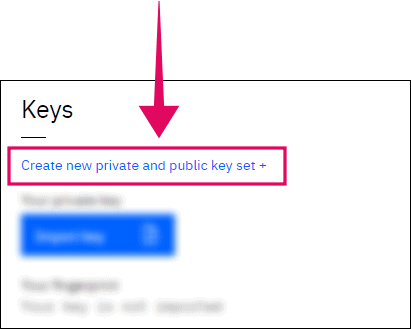
A pop-up will appear on the bottom-right of the screen. Fill in your Name, Email address, and Password for the keyset in the pop-up screen, and then hit the Generate button. Make you use a strong passphrase, and save it somewhere safe because you won’t get the option to reset it ever.
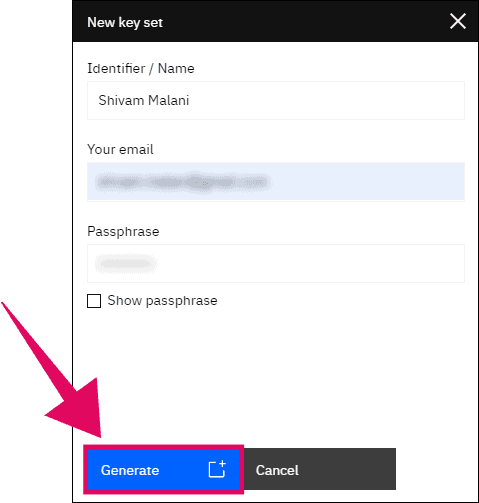
Once the keys are generated, you will get the option to download your private and public keys in .asc format or as an image file (useful on iOS devices which still doesn’t handle the .asc file format well).
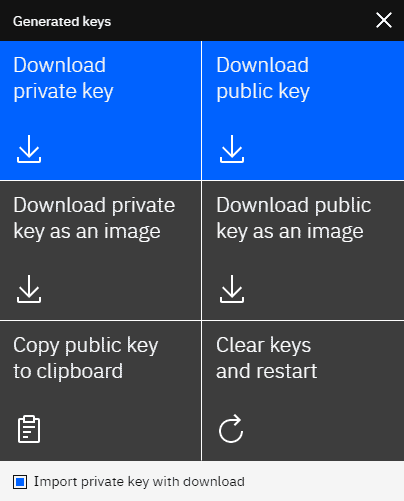
To download and import your newly created Private key into the MagicPad dashboard, click on the Download private key button from the Generated keys pop-up screen. Make sure the check box to “Import private key with download” at the bottom of the pop-up screen is ticked.
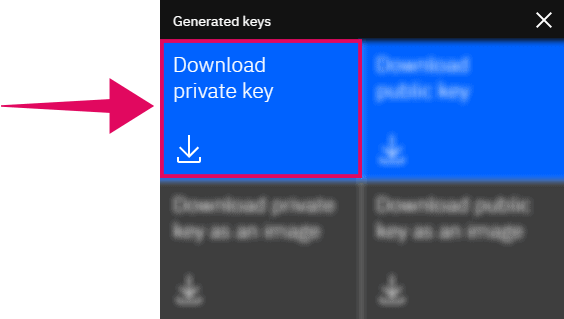
Once the private key is imported, you’ll be able to see its fingerprint under the “Your fingerprint” heading.
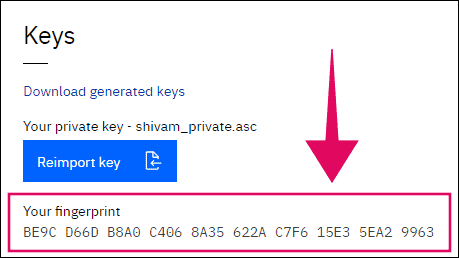
Now, click the Download public key button to save your MagicPad public key on your PC or mobile. Then, click the Copy public key to clipboard button to copy the key.

Close the pop-up screen after copying your public key. We will now upload your public key to the PGP keys server or the MagicPad server. You can skip this if you do not want to store your public key online. But, we recommend you to do it to make easier for anyone with your email address to send you an encrypted message.
Click the Browse button under Access key servers heading on MagicPad dashboard. It’ll open a pop-up screen.
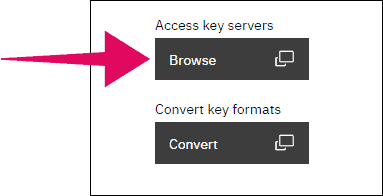
Paste your public key that we just copied in the instructions above, then click the Upload key button to store and save your public key online.
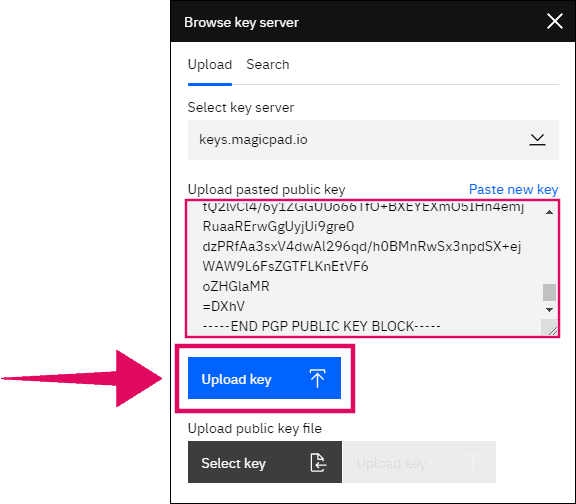
STEP 2
Create and Send an Encrypted Message or File
Once you have created your private and public keys, you can now send an encrypted message or file using MagicPad.
To get started, you need the public key of the receiver of the message. If you know the receiver’s email address, public key fingerprint, or key ID, you can search for their public key from the same place where we uploaded your public key in the instructions above.
Click the Browse button under Access key servers heading on MagicPad dashboard.

On the pop-up screen, first select the Search tab, then select the key server (try ’em all), then finally enter the email address, public key fingerprint, or key ID of the person you want to send an encrypted message or file and hit the search button.
If a public key is stored for the person you search on either the MagicPad or PGP keys server, then you’ll get the options to download or import the key into MagicPad.
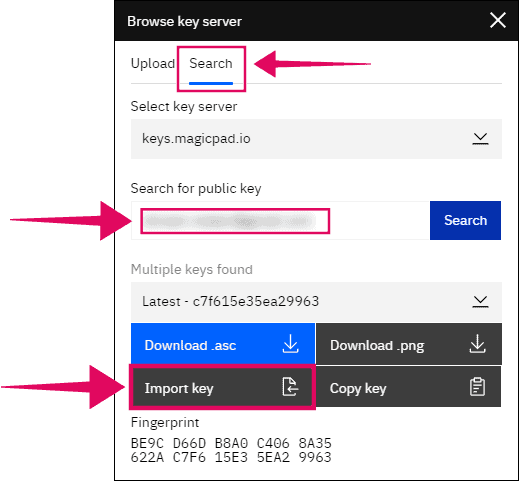
💡 Tip
If you can’t find the public key of the person you want to send a message on the access key servers, then ask them to share their public key personally so you can send them an encrypted message or file. In case they don’t have one, tell them to create new private and public keys following the instructions on this page.
Once you’ve imported the public key of the receiver into MagicPad, the Keys section would look something like this. Make sure you enable the checkbox for storing imported keys for next session to keep the keys loaded next time you open MagicPad.
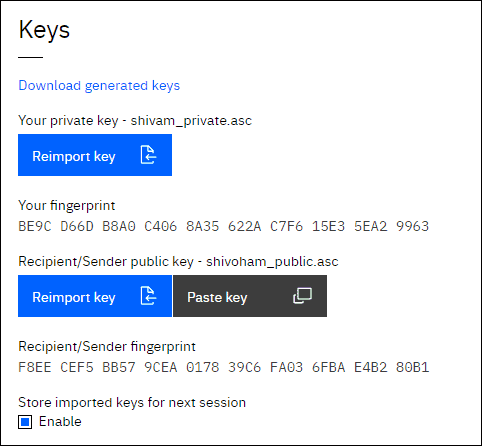
After setting up the sender’s private key and receiver’s public key in MagicPad, go to the Write tab from the options available in header on the MagicPad dashboard.

Finally, start writing your encrypted message inside the Your message box. There’s no word limit here, so you can write a message as long as it needs to be.
After writing the message, make sure to click on the Sign message checkbox and sign it with your private key passphrase that we used when creating your private and public keys in the instructions above. After that, hit the Encrypt button.

After you click the encrypt button, a pop-up will appear on the bottom right with the encrypted message. You can either download it in a .txt file format or copy it to your clipboard using the using the Copy button.
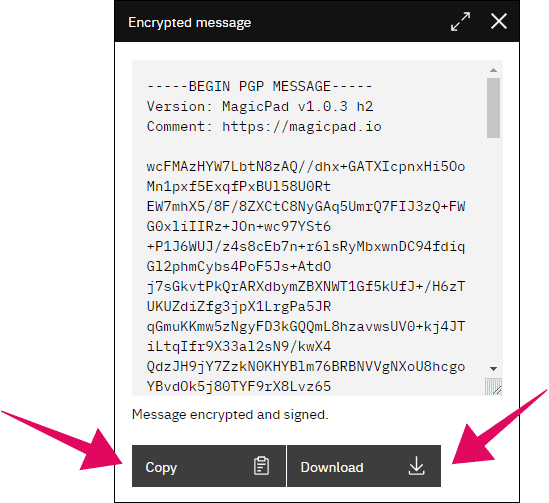
You can now send this encrypted message via email or any other communication method of your preference to the person it’s intended for.
💡 Tip
You might want to share your public key as well along with the encrypted message with the receiver in case you chose not to upload your key to the access key servers. The receiver will need your public key to decrypt and read the message.
Sending an Encrypted file using MagicPad
If you wish to send a file with encryption, like a photo of an important document, or a classified PDF file, you can do so from the Attach tab option on the MagicPad app header.
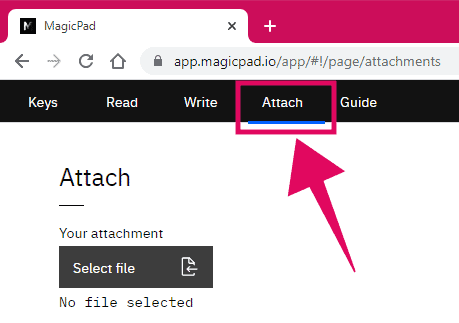
Now click on the Select file button to select the image, PDF, or file of any format that you wish to encrypt using MagicPad.
After selecting the file, click the Encrypt button and wait for a while until you see the Download encrypted file pop-up.
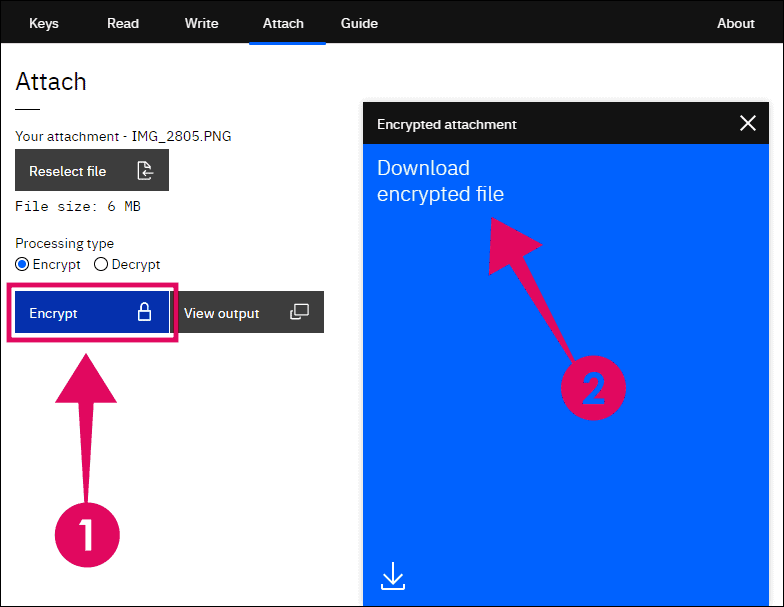
Share the encrypted file via email or any other communication method of your preference to the person it’s intended for.
STEP 3
Receiving and Decrypting a Message or File using MagicPad
If you have only wanted to send an encrypted message or file using MagicPad, then this part of the guide is not for you. However, if you want to understand how read and decrypt a message or file in MagicPad, follow the rest of the guide below.
To read or decrypt a message, you need the sender’s public key. You cannot decrypt an encrypted message sent via MagicPad without the public key of the sender of the message.
You can ask the sender to share his public key personally to you. Or if you have the sender’s email, public key fingerprint, or key ID, then you can search for it from the access key servers option in MagicPad. But for this to work, the sender must have his public key uploaded on either the MagicPad or PGP key servers.
Go to the Keys section in MagicPad app, and either import the sender’s public key if you already have it, or click on the Browse button under Access key servers option.

From the Browse key server menu, search for the sender’s public key with his email, fingerprint, or key ID. If you find it, import it into MagicPad using the Import key button on the pop-up screen.

After importing the sender’s public key, make sure your private key is loaded too. The keys screen should look like the screenshot below.

Now click on the Read link in the MagicPad app header to decrypt the encrypted message you received.
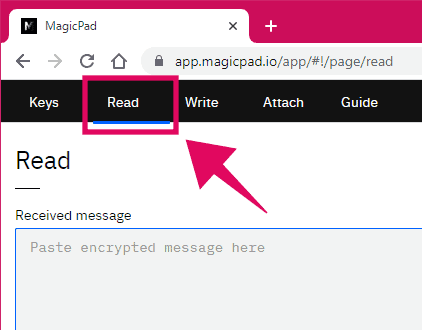
Paste the entire content of the encrypted message starting from line -----BEGIN PGP MESSAGE----- to the end line -----END PGP MESSAGE----- into the Received message field on the screen.
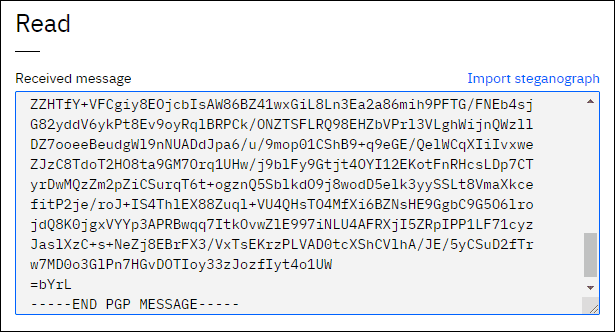
Then enter the passphrase of the private key. And remember, this is the passphrase of the receiver’s private key, not the sender’s. It’s obvious but I’m mentioning it to avoid confusion, because that’s bound to happen if you’re reading about MagicPad for the first time.

If all went well, a pop-up will show with the decrypted message on the bottom-right of the screen. If the sender signed the message with their private key before encrypting it, then you should be able see Signature valid label below the decrypted message on the pop-up. This verifies the authenticity of the message.

That’s it. If need be, you can also copy or download the decrypted message to your device.
Decrypting an encrypted file using MagicPad
If you have received an encrypted file such as an image, or a PDF file, you can decrypt it as well using the MagicPad app. Head over to the Attach section of the app.

Now click on the Select file button to select the encrypted file that you received. After selecting the file, select the Decrypt option from the Processing type section and enter your private key passphrase.
Then finally, click the Decrypt button and wait until you get the pop-up to download the decrypted file.
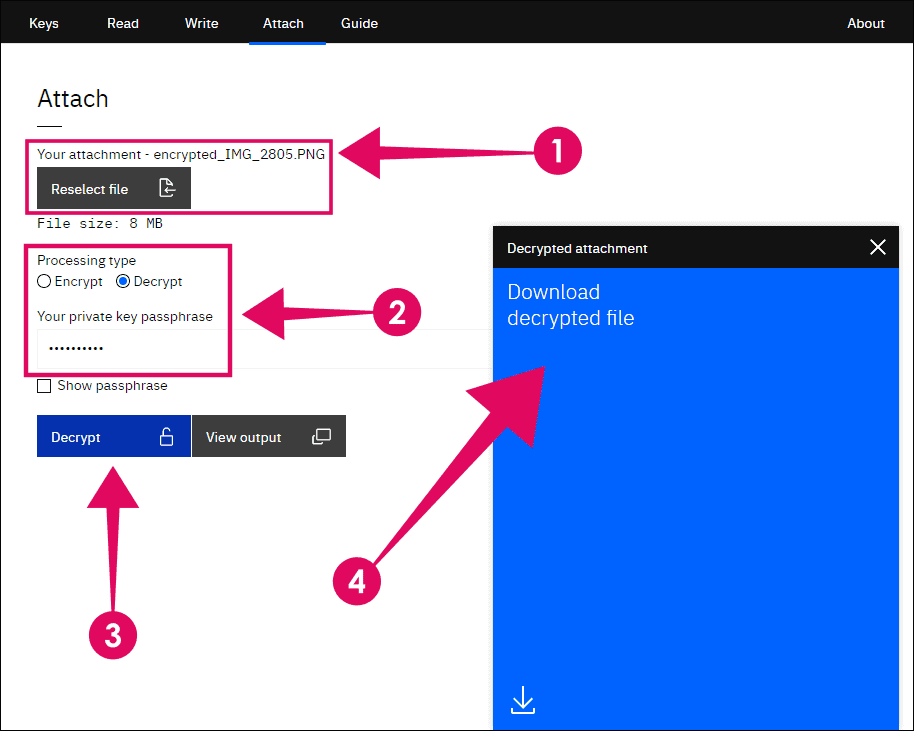
That’s the basic guide of using MagicPad to send and receive encrypted messages and files. But there’s more to the tool such as sending messages encrypted inside an image file, it’s truly a spy thing and we’ll cover that in a different post.

